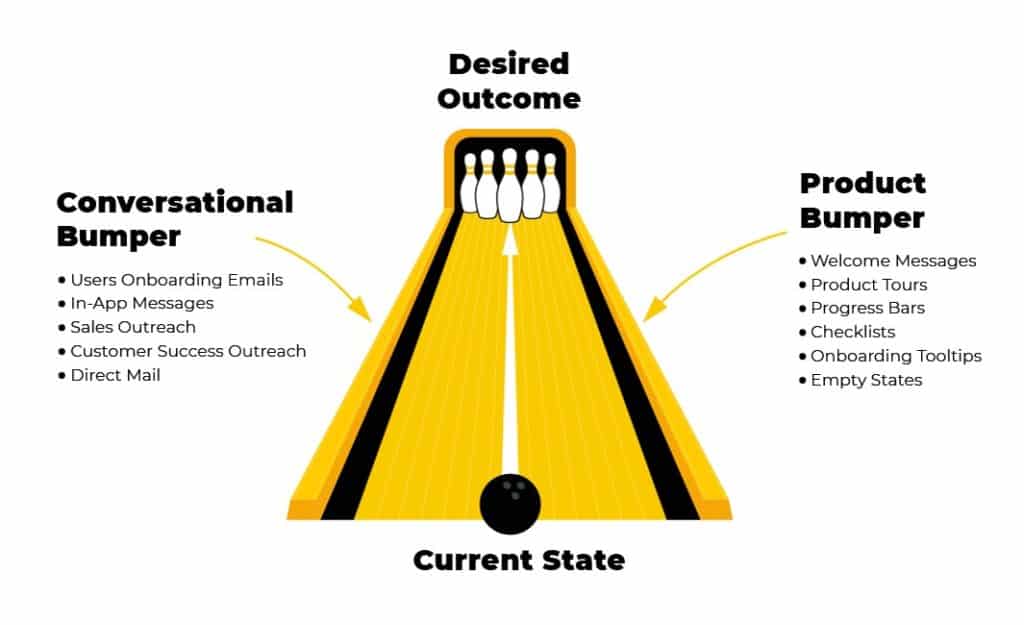We have been reading Product Led Growth: How to Build a Product that Sells Itself by Wes Bush as a Product team at Armor. Because a team that learns together grows together. For some of us it is the first time reading this book since it was released in 2019 and for others we're re-reading it. But regardless of whether it is the first time through or a repeat read the book is yielding valuable insights and talking points amongst the team. There have been two areas of insights from the product-led growth framework presented in that book that I would like to explore in this blog post from these readings: the first is around the shift companies can take from best guess pricing strategies to value-based pricing for their customers; the second set of insights concerns the impact of a product-led growth strategy on onboarding and user engagement.
Value-Based Pricing Strategies for SaaS companies

There have been many articles recently on "How SaaS Companies Benefit from Value-Based Pricing". Specifically, the above slide on value-based pricing from bondsai.io does a good job of outlining the goal of value-based pricing strategies for companies, to align your price point in market to an area where the company captures market share, substantial revenue, and high profit margins, while the buyer or user gains considerable value for the price and feels as if they have gotten a good deal. This good deal can be measured as product-market fit where a user says they would be upset if they couldn't use your product anymore. TechCrunch described this as "Bottom-Up SaaS: A framework for mapping pricing to customer value". I believe the debate between bottom-up versus top-down sales growth is a bit of a misnomer and successful product-led SaaS companies should actually take a cue from Richard Hendricks from HBO's Silicon Valley and adopt a middle-out strategy but that's for another post.
Wes Bush describes the evolutionary path companies go through on pricing as happening in 3 stages. First, companies use a best-guess strategy. This strategy can sometimes look at market guidance such as what competitors are doing but is generally what the founders or executive team feels is the right strategy based on their years of experience inn the industry. While this experience certainly matters to pricing discussions, it cannot be the determining factor in a company's strategy. Second, companies evolve to use cost + margin pricing. This adds a little more quantifiable approach to the strategy for the company as it looks at what it takes to run the business and seeks to add a comfortable profit margin for the company on top. However, this only creates value for the company and not for the customer necessarily. The company may be leaving money on the table because the customer experiences more value from the product than the arbitrary profit margin assigned by the business or the company may be overcharging based on the value the customers receive and start losing deals on price or experiencing increased churn due to perceived value not equating to experienced value.
The last stage of a companies pricing evolution though takes them to value-based pricing that is the best possible result for both the business and the buyer. The customer gains in whatever value metric they achieve with your product and you gain financially and with sticky users and substantial life-time value (LTV) from your customer base. For example, for social networks such as Facebook, Twitter, and LinkedIn, as well as workplace communication tools such as Slack the value metric is the number of users on the platform because the platform becomes more valuable to me when I can connect, communicate, and engage with more people. However, charging by user does not necessarily make sense for a cybersecurity company like Armor because the number of users does not affect the value a company receives from using our product. They do, however, get value out of the amount of coverage of their IT estate we can provide them so we can either charged by amount of infrastructure protected or the number of detections with corresponding remediation guidance we can provide in an environment because users get value out of how secure and/or compliant their business becomes when using Armor's security-as-a-service SaaS platform, Armor Anywhere. It is important for companies to think about their pricing strategies using the value-based pricing framework laid out in Product-Led Growth as it will give them a competitive differentiation in market.
How Onboarding and User Engagement Benefit from a Product-Led Growth Strategy

A big part of Product-Led Growth is how companies who adopt this strategy can benefit across the customer lifecycle journey from getting more qualified leads who are likely to spend more with the product to converting those leads into lifelong customers who keep spending and increasing their engagement with the product. It starts by saying companies should use their marketing initiatives to funnel people directly into a free trial or freemium experience of the product and use those initial customer touches with the product to generate product qualified leads (PQLs) that ultimately convert into paying customers. The goal is to cut out the friction of previous software buying experiences...talking to sellers, sitting through demos, getting bombarded by endless marketing content before getting to even try the product. If your product does not make the user feel as if they are getting enough value out of their experience then you have not found product-market fit. If customers do experience value then they'll convert into paying customers. Also, customers are going to try the product eventually, so if they only try after they buy you are likely to see increased churn, bad press or customer reviews, etc when perceived value doesn't equal experienced value. Getting to these insights earlier in the customer lifecycle allows SaaS companies pinpoint which levers they need to pull to achieve product-market fit quicker.
After the customer is in the product funnel, has experienced a free trial, gotten value out of the product and converted to a paying customer it is the sales, product, and customer success teams duty to keep the user engaged from onboarding through every day usage to ensure that they continue to be successful with the product, see value out of using it, and continue to increase their engagement and spend so the company offering the product also continues to experience value and gain something from the relationship. This often manifests itself in cross-sell and up-sell opportunities and ways for the company to increase MRR and the TLV of a customer. These tactics also help prevent customer churn within a business. The end goal of every business should be that when a customer is using the product, experienced value = perceived value = value-based price-point that makes everyone smile.

The above diagram is a great example of some of the ways a product-led growth strategies affects what the SaaS product's responsibility and what the Customer Success, Sales, and Marketing teams' responsibility is in affecting user engagement and LTV of their customer base. Businesses should imagine a bowling alley when thinking about how to make customers successful with their product. The goal of bowling is to guide the ball from your hand to the other end of the lane without going in the gutters and simultaneously knocking down as many pins as possible. Similarly, the goal of a product-led business should be to guide their customers (the ball) to the value they seek (the pins) by providing bumpers similar to how bowling lanes provide this assistance to customers who need it.
The book outlines two ways in which this happens, product bumpers (welcome messages, product tours, progress bars, checklists, tooltips, empty states, etc.) which are primarily the responsibility of the product itself and the product team to maintain and conversational bumpers (user onboarding emails, sales outreach, customer success outreach, direct mail, etc.) which fall to marketing, sales, and customer success generally even though there can be some cross-pollination of team responsibility across both sets of bumpers. The goal of each of the bumper strategy should be to just like bowling bumpers make the customer so confident in their own ability to achieve the value they seek that they no longer need the bumpers and can achieve strikes with your product all on their own.
By adopting a product-led growth company, SaaS companies can benefit in many areas. It can have transformative effects on areas other business such as pricing, onboarding and user engagement, and product growth. It recognizes that the product is the experience and that experience can drive a lot in terms of corporate strategy for a company. At Armor, we'll be looking to bring these insights into our product management and corporate strategy conversations and continue to look to build paths to value for our customers. In what ways will you take these insights and leverage them within your business? Discuss in the comments below or share on social media and let me know your thoughts!
If you enjoyed this post and want to see more like it, keep me fueled by buying me a coffee :)






Comments